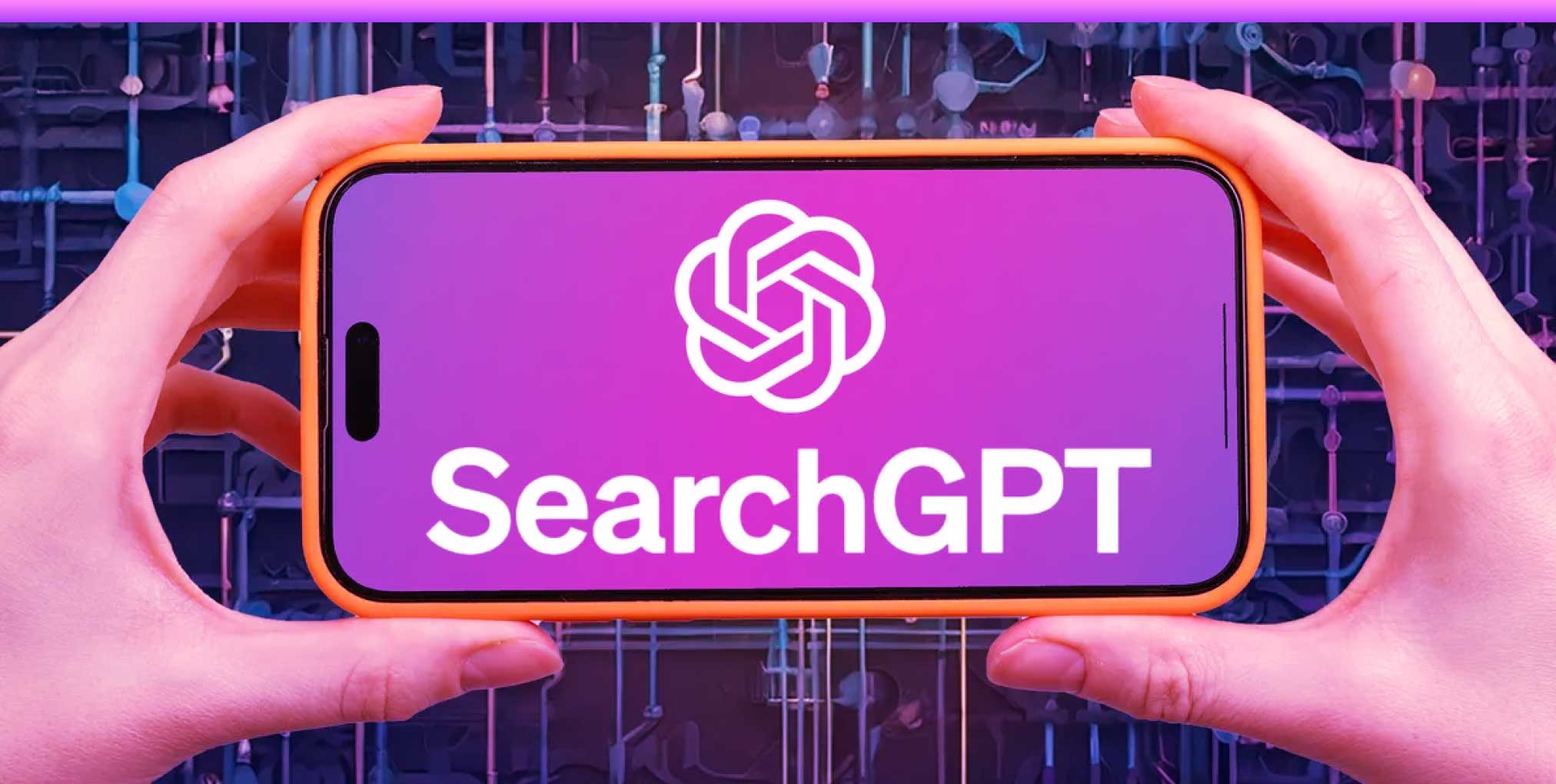September 4, 2024
SearchGPT SEO: The Marketer’s Guide to AI Search
The world of search is evolving rapidly with the emergence of AI-driven search engines. Among the most anticipated developments is SearchGPT, a prototype developed by OpenAI. SearchGPT aims to redefine how we interact with search engines by combining the power of conversational AI with real-time web data. This blog explores the key aspects of SearchGPT, its unique features, and how marketers can optimize for this groundbreaking platform.
What is SearchGPT?

SearchGPT is an AI-driven search optimization tool powered by advanced natural language processing (NLP) models, similar to the popular ChatGPT technology. It uses machine learning algorithms to analyze search patterns, user intent, and keyword trends, offering marketers insights into how search engines interpret and rank content.
Unlike traditional SEO tools, SearchGPT can generate keyword-rich content, suggest improvements, and predict search engine behavior, making it a powerful asset for modern SEO strategies.
SearchGPT Prototype: A New Era of AI Search
SearchGPT is currently being tested as a temporary prototype, which includes innovative AI search features designed to provide fast, timely answers with clear and relevant sources. The prototype combines the strength of advanced AI models with real-time information from the web, enhancing conversational capabilities to make searching faster and easier.
Initially launched to a small group of users and publishers for feedback, this temporary prototype is a glimpse into the future of search, with plans to integrate the most successful features directly into ChatGPT.
Key Features of the SearchGPT Prototype
- Fast and Direct Answers: SearchGPT provides immediate responses to user questions, drawing on the latest information from the web and citing clear, relevant sources. This approach reduces the effort required to find accurate information, allowing users to get answers quickly.
- Conversational Search Experience: SearchGPT’s conversational interface allows users to ask follow-up questions naturally, building context with each query. This interactive approach mimics a human-like dialogue, making the search process more intuitive.
- Commitment to Publishers and Creators: SearchGPT aims to support a growing ecosystem of publishers and creators by prominently citing and linking to sources in its responses. This feature helps users discover publisher sites while providing publishers with visibility and opportunities to engage with a wider audience.
- Collaboration with Publishers: SearchGPT is designed in partnership with publishers, who provide feedback to help shape its development. The platform allows publishers to manage how their content appears, ensuring that they have control over their presence in SearchGPT’s results.
The Importance of SEO in SearchGPT
SEO remains a cornerstone of digital marketing, but with AI-driven search engines like SearchGPT, the strategies need to evolve. SearchGPT represents a shift from traditional search tactics to more conversational, context-driven optimizations. As Google’s dominance in search faces challenges, marketers must adapt to new SEO methods tailored to AI searches.
Recent trends show Google rolling back on AI-generated summaries due to accuracy issues, reducing their prevalence in search results. This shift underscores the importance of optimizing for platforms like SearchGPT, where conversational relevance and up-to-date information are prioritized. Marketers should not rely solely on Google; instead, they should diversify their SEO efforts to remain visible across evolving AI search engines.
SearchGPT vs. Google: A New Way to Search

SearchGPT brings a host of features that differentiate it from Google, challenging the traditional search landscape.
Key Features of SearchGPT
- Ad-Free Experience
SearchGPT offers an ad-free interface, focusing on providing clear and accurate information without the distraction of ads. While this feature may evolve, it currently sets SearchGPT apart by prioritizing user experience over ad revenue.
- Conversational Interface
SearchGPT’s conversational style mimics human interaction, allowing users to ask questions and receive contextual follow-up answers. Unlike Google, where follow-up searches often require rephrasing, SearchGPT maintains context throughout the interaction, enabling deeper engagement and quicker answers.
- Real-Time Answers and Source Citations
One of SearchGPT’s standout features is its ability to provide real-time answers with clear citations, offering transparency and credibility. Each response includes explicit links to sources, allowing users to verify information easily.
- Content Doesn’t Train the Algorithm
SearchGPT does not use the content it retrieves to train its AI models, a deliberate choice by OpenAI to respect publishers’ rights and avoid biases. This ensures that users and publishers can trust that their content is not being used beyond their control, enhancing transparency and ethical AI usage.
SearchGPT SEO & AI Search Strategies

To succeed in this new AI-driven search environment, marketers and SEOs need to adapt their strategies. Here are some key approaches:
- Deep Contextual Relevance
Content needs to cover topics holistically, incorporating semantic keywords and relevant entities to establish context. This approach not only benefits traditional search engines but also enhances the AI’s understanding of your content’s depth and relevance.
- Conversational Content Optimization
Content should be optimized for conversational engagement, mimicking the natural flow of human dialogue. Simplifying language, avoiding jargon, and creating a conversational tone helps SearchGPT better understand and rank your content.
- User Experience and Engagement Signals
Engagement metrics are crucial for AI search engines. Implementing interactive elements like quizzes, polls, and engaging multimedia can improve user experience, signaling quality and relevance to SearchGPT.
- Content Freshness and Timeliness
Given that SearchGPT relies on current content, keeping your website updated with fresh and timely information is critical. Regularly revising evergreen content and promptly addressing trending topics will help maintain visibility.
- Rich, Structured Data Integration
Structured data plays a significant role in AI search engines. Incorporating schema markup helps SearchGPT understand and display your content effectively, boosting your chances of appearing prominently in search results.
- Content Diversity and Format Variety
SearchGPT values diverse content formats, including text, video, and infographics. Diversifying the types of content on your site not only appeals to different audience preferences but also enhances SEO performance in AI search engines.
SearchGPT & AI SEO Trends
AI search is reshaping the digital landscape, and marketers must stay ahead of the curve. SearchGPT’s focus on real-time, conversational search introduces new opportunities and challenges for SEO. As these platforms grow, expect a continued emphasis on contextual content, engagement, and ethical AI practices.
Conclusion
As AI search engines like SearchGPT gain traction, marketers need to refine their SEO strategies. Staying informed about these evolving technologies and optimizing content for AI-driven search will be the key to maintaining visibility and driving traffic. Integrate the changes, adapt your approach, and connect with SEO experts to ensure you’re maximizing the potential of AI search.




